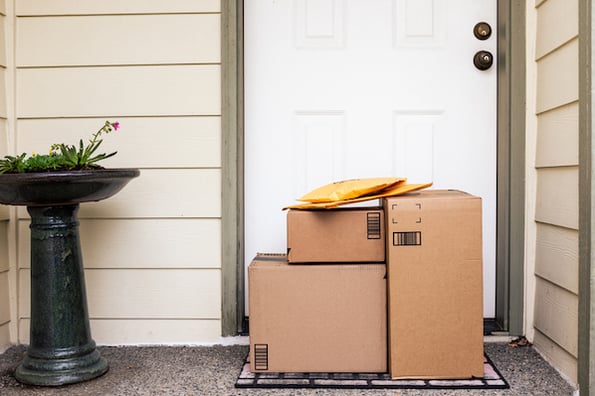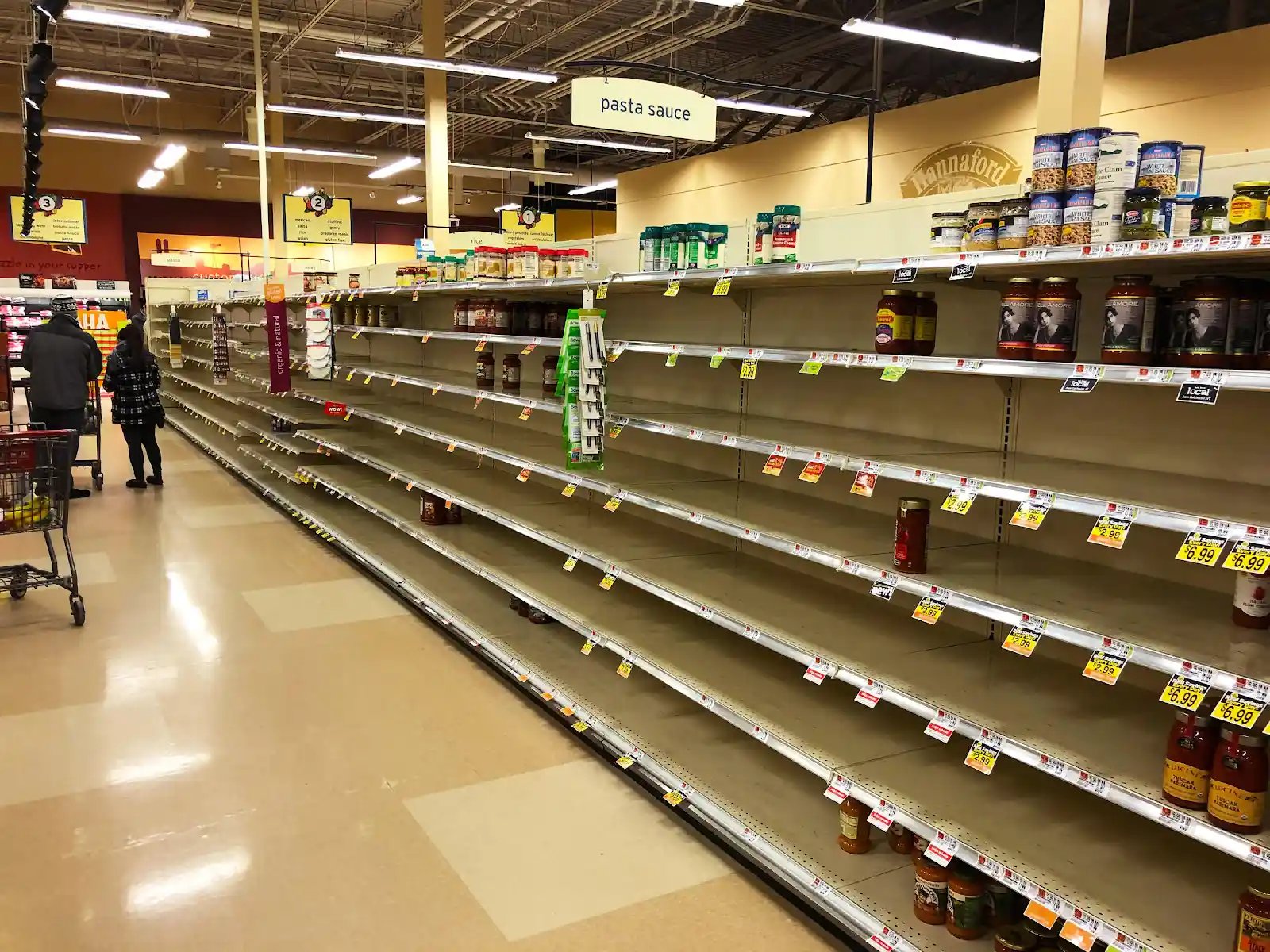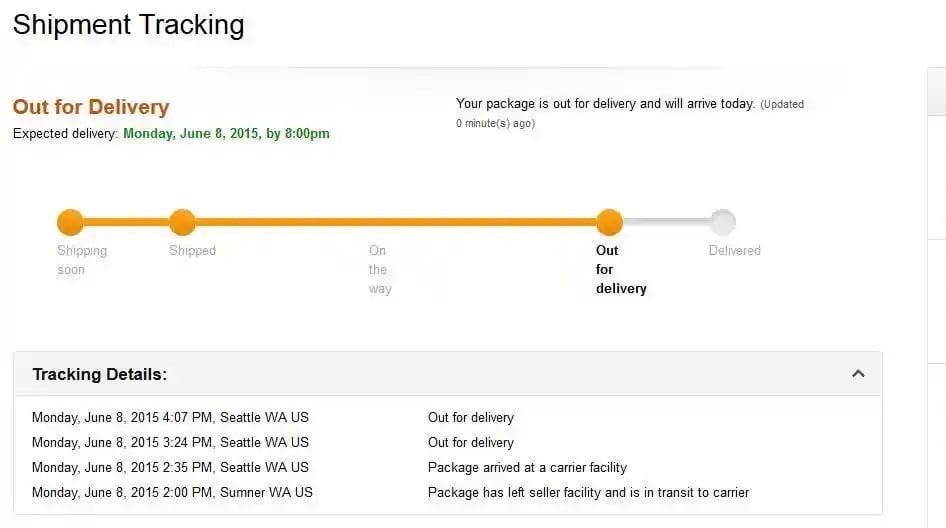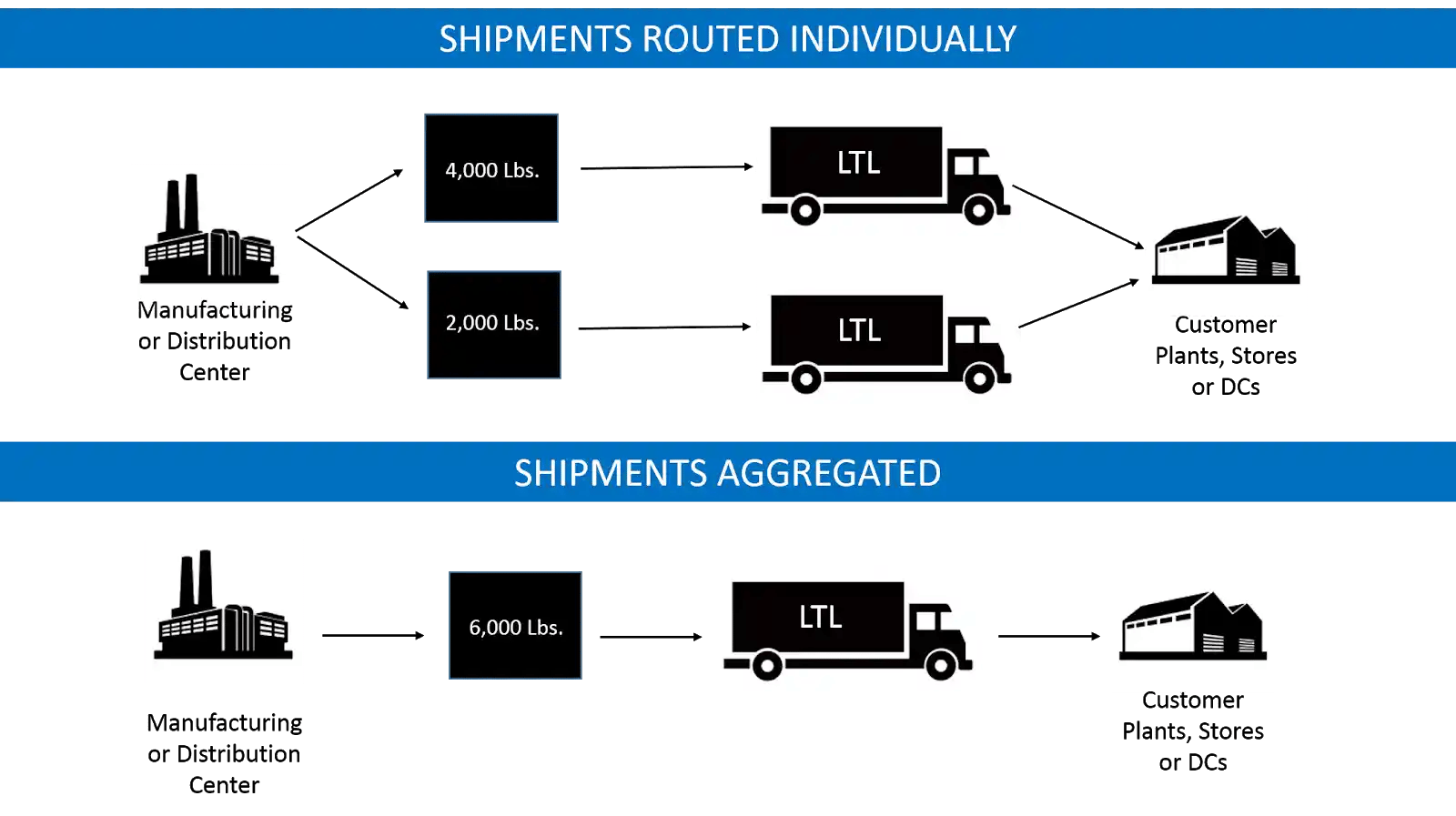Have you ever wondered how food gets delivered to your local grocery store?

Before it ends up on the shelf, grocery stores work with several distributors to keep their products stocked and to meet customer demand. After all, it would be a bit disconcerting if you walked into your local Hannaford and saw all of the shelves empty, like in this photo taken at the start of the COVID-19 pandemic.

With so many products being delivered on a regular basis, grocery stores need a logistics system that can manage and monitor their transportation operations.
But, they're not the only businesses that use this type of system.
Transportation management systems, or TMS, are fairly common with most retail and ecommerce businesses. If you're delivering to a customer or working with a distributor, a transportation management system helps you keep track of your delivery process and allows you to update customers with useful information about their order.
In this post, let's talk more about transportation management systems and what you can do to optimize it at your business.![Access Now: Customer Support Strategy Template [Free Tool]](https://no-cache.hubspot.com/cta/default/53/7dff7d77-3a4c-40ea-a4c8-376b827a83ab.png)
What's a Transportation Management System?
A transportation management system (TMS) tracks, streamlines, and standardizes the shipping process for your business. It monitors the physical movement of goods coming both in and out of the company and it makes sure that shipments are correct and delivered on time.
A TMS can be a manual system, but most companies will use software, like the one below, to automate their delivery process.

Transportation management systems create transparency for your shipping operations. Not only does your company know where shipments are at all times, but you can share this information with your customers as well. That way, if a freight truck is delayed or if there's a problem with a supply chain, you can communicate that information with your customers and provide them with an updated delivery date.
Transportation management systems are also useful if you're delivering products via different modes of transportation. For instance, if you have a freight truck operation and you're also delivering products by air, it can be tough to keep track of which shipments are going where and when they're going to arrive. If you have transportation management software, you can categorize your shipment so you know exactly how each good or product is being delivered.
Now that we're familiar with what a TMS is, let's look at some ways you can optimize it at your business.
Tips for Optimizing a Transportation Management System
- Create a Transparent Shipping Process.
- Take Advantage of Shipping Aggregation.
- Regularly Assess Your Shipping Process.
- Build Strong Partnerships With Distributors.
- Adopt an Automated Software.
- Reconsider Shipping Routes and Modes of Transportation.
- Protect Your Data.
1. Create a Transparent Shipping Process.
Whether it's the next shipment of your most popular product or that new sweater you bought online, people want to know when their orders will arrive. Some transportation management software will let you share your shipping progress with customers — like in the example below — so they can see exactly where their order is and when it will be delivered.

While transparency is great for customer service, it benefits your employees, too. For example, if it's easy to tell when a shipment is delayed, your sales and customer service personnel can proactively alert customers so they're aware of the delay and why it has occurred. This helps you improve customer satisfaction scores and prevent potential churn because you're getting in front of the issue and resetting expectations of when the shipment will arrive.
2. Take Advantage of Shipping Aggregation.
Shipping aggregation is when you combine multiple shipments into one order. That way, rather than making several deliveries to the same place at different times, you'll make one, bulk delivery instead. This approach can help you save some money on freight costs since you're not making as many deliveries as you were before.

3. Regularly Assess Your Shipping Process.
Once you build your transportation management system, the work doesn't stop there. You should be constantly looking for ways to improve your transportation process now that you have a way to monitor every aspect of it.
A good rule of thumb is to look for ways to cut your shipping costs while still maintaining a speedy and reliable delivery operation. But, while you should be looking to cut unnecessary costs, remember that customers value reliability and efficiency when it comes to shipping. In the end, you don't want to jeopardize a successful transportation management system just to save a few bucks in the short term.
4. Build Strong Partnerships With Distributors.
If you're working with distributors, it's important to foster a strong and trustworthy relationship with them over time. After all, they make sure your products get to the right location and at the right time, and if there's a problem with your shipping, they should be the first people to tell you — not your customers. The more communication you have with them, the more insight you'll get into your shipping process. And, the more you know there, the more information you can share with customers to enhance their experience with your brand.
5. Adopt an Automated Software.
The bigger your shipping operation is, the more likely you'll need an automated system to monitor it. While your manual transportation management system may have worked so far, the more your customer base grows, the more deliveries your business will make. Which means, there's a greater chance that you'll run into an error from manually inputting shipping data. And, without an automated system to record everything, it can be harder to track down where things went wrong.
Transportation management software not only can help you spot when these problems occurred, but it can prevent them from happening altogether. With an automated system, there are fewer chances for human error and when mistakes are made, most are caught by the software before they affect the shipment. If something does slip through, your team can easily find it and work proactively before the customer notices the issue.
6. Reconsider Shipping Routes and Modes of Transportation.
If you've been using the same shipping routes for a while now, it may be time to rethink how your deliveries are getting to their locations. With new infrastructure, traffic patterns, and GPS technology available, there may be more ideal freight routes for delivering your products that you might not have noticed before.
The same goes for modes of transportation. While you might not have been able to deliver using freight ships or airplanes in the past, your business may be able to now. Or, you might have a new target audience in a different part of the world, and the only way you can reach them is via air or sea. Adopting new modes of transportation is a great way to expand your customer base and connect with buyers from all over the world.
7. Protect Your Data.
Shipping operations require businesses to gather a lot of sensitive information about their customers. This includes things like their names, where they live and work, their phone numbers, and more depending on what the product is and where it's being shipped to.
With all of this data being shared both within and outside of your company, it's important to prioritize data security in your transportation management system. The last thing that you want is to manage a crisis where all of your customers' data was given without your authorization. Not only can this land you in a tricky public relations situation, but it's also a very easy way to lose all of the trust and goodwill that you've built up with customers.
For more ways to optimize shipping, learn about the importance of supply chain visibility.









